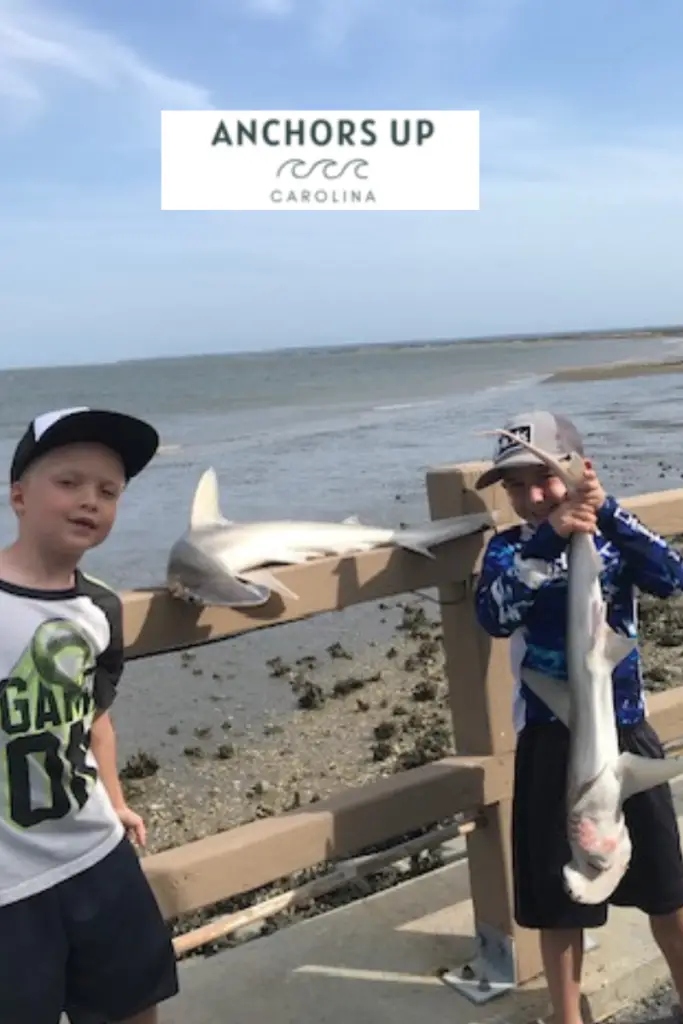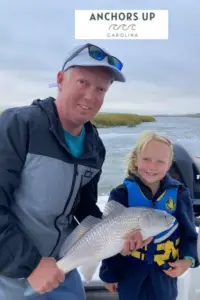One of the most fun activities I enjoy with my two homeschooling children is fishing. Children remain highly engaged and enjoy being outdoors for more reasons than simply catching a fish. Outdoor activities like fishing expose us all to nature, and it’s amazing how much wildlife is spotted by kids when standing on the banks of any body of water. No matter if you’re creating a fish homeschool group or simply taking your kids fishing, here are tips on teaching homeschoolers to fish.
Why Is Fishing Important For Families
Fishing is essential for families for many reasons, but the primary reason is an escape from life’s daily nuances. In my home, we follow a routine that becomes redundant albeit necessary. Adding in an hour of fishing provides excitement and fun for my children.
Without a doubt, fishing requires patience. Patience goes beyond waiting for a bite. Tying lines is no simple task, between understanding how to tie knots and handling the thin thread.
Let’s face it; the United States has an abundance of fish varieties; therefore, fish identification is an excellent educational experience. Purchase a book with fish images and descriptions. With resources, your kids will have fun positively identifying caught fish.
Lastly, casting a line and reeling fish is only a fraction of fishing. Take into consideration what is around you. The educational experience is endless when it comes to spotting varieties of birds, turtles, frogs, and other wildlife.
Where Can You Fish With Your Homeschoolers
No matter if you’re involved in a fish homeschool group or as a family, the opportunities are abundant when it comes to locations. Undoubtedly fishing locations go unrecognized despite being minutes from your home. Here are the best locations to take homeschoolers fishing.
Lake, River, Pond, and Creek Fishing
Fortunately, towns and cities consider green space when in the development stages. For this reason, it is not uncommon for the construction of man made ponds on public land and within private communities. For example, I live in a neighborhood with over 150 freshwater and saltwater ponds and lagoons.
Beyond man made bodies of water are significant waterways and lakes. Public access points are available, including municipal and state parks. It should be noted that most parks feature a fishing dock or pier. Dock or pier access helps reduce the likelihood of snags or getting tangled in the brush along the shore.
Inland Coastal Water Fishing
Living in coastal regions offers a much wider range of options when it comes to fishing with homeschoolers.
Importantly, coastal areas will also offer freshwater fishing opportunities compared to landlocked locations with no saltwater access.
In comparison to freshwater fishing destinations, saltwater access is similar. Consider piers extending from beaches, public parks, state land, and boat ramps.
My family and I live in a coastal region and often alternate between freshwater and saltwater fishing locally.
What Kind Of Fish Should You Target With Kids
The varieties of fish species in fresh and saltwater are significant. However, to keep kids entertained, here is what you should target with your homeschooled children.
Freshwater Fishing Species
One of the most notable freshwater fish is the largemouth bass. Largemouth bass is abundant and an excellent species to target with children, particularly older kids or kids with fishing experience.
.Panfish are by far the easiest to target and keep kids entertained. Although panfish such as bluegill, sunfish, pumpkinseed, and more are small, they provide non stop action. Small children will reel in these fish with ease.
Saltwater Fishing Species
Narrowing down species in the Atlantic Ocean, Pacific Ocean, and Gulf Of Mexico is too broad. We will focus on the southeastern coastal states.
Redfish, sea trout, and flounder are prevalent in Georgia, South Carolina, and North Carolina. Both redfish and sea trout congregate in schools making them easy to target for children of all experience levels.
Although not caught by rod and reel, blue crab are abundant inshore. Fishing for blue crab requires a different technique, but children of all ages catch them in large quantities.

What Do You Need To Catch Fish
As a former boat captain, I have spent significant time fishing fresh and saltwater. Here is what you and your family need to have a successful day of fishing.
Freshwater Fishing
Freshwater fishing for bass and panfish requires different baits but the same rod and reel setup. When it comes to the rod, either a spinning or spin casting reel with 10 to 12 pound monofilament line is ideal.
Bass are aggressive feeders that readily strike soft plastic worms on a worm hook. Importantly, focus on guiding kids to cast near structures such as docks, trees, and Lilly pads, as this is where the bass congregate.
Conversely, panfish require much smaller hooks and live bait. Panfish are equipped with small mouths. With that being said, tie on a size four hook and add a fishing bobber two feet above the hook. Visit a local bait store and pick up live crickets, nightcrawlers, or meal worms. Lastly, add the bait to the hook and cast.
Saltwater Fishing
Saltwater fishing for seat trout, redfish, and flounder is comparable to crappie fishing. With that being said, you will need to scale up in size. Pick up size 2/0 circle hooks. Importantly, circle hooks help to reduce fish from becoming injured by swallowing the hook.
In addition to hooks, you’ll need a popping cork. A popping cork is similar to a bobber but makes a distinct sound imitating feeding fish by pulling back on the rod tip. The set up is simple: connect a two-foot line section between the hook and the float and tie the float to the mainline.
When casting from the shore or dock, have the kids focus on areas near oyster beds and marsh grass.
My kids have a blast catching blue crab in ring nets. Ring nets are circular with a long line attached to the top. When lifted, the bottom of the net lowers, making it impossible for crabs to escape. Crabbing is simple and straightforward. First, add a chicken neck. Second, lower the trap from a dock or pier. Third, allow the net to sit for five minutes. Lastly, pull it to the surface and repeat. It should be noted that the line must remain tied to a permanent structure. If the line is dropped, you will not lose your trap.
Must Haves When Fishing With Homeschoolers
Preparation is key when heading out for a day of fishing. Your homeschoolers will be busy catching fish, so make sure they are coated in sunscreen, and I highly recommend a hat and sunglasses.
Having the proper accessories is a must and that includes a rag to handle fish and clean hands, hand sanitizer, pliers for removing hooks, a measuring device for fish, and a utility knife.
Hydration is essential, especially during the summer months. Bring along plenty of water and snacks for the kids.
Lastly, comply with all state regulations. Ensure that fish are of proper size and purchase a fresh or saltwater fishing license for anglers of age required to be licensed by the state.
Head Out Fishing With Your Homeschoolers
One of our favorite activities is fishing with our two homeschoolers. Whether you’re establishing a group or going as a family, I highly recommend fishing with kids. The educational opportunities are endless, and it is unlikely that you’ll need to travel far to find a suitable spot to catch fish











